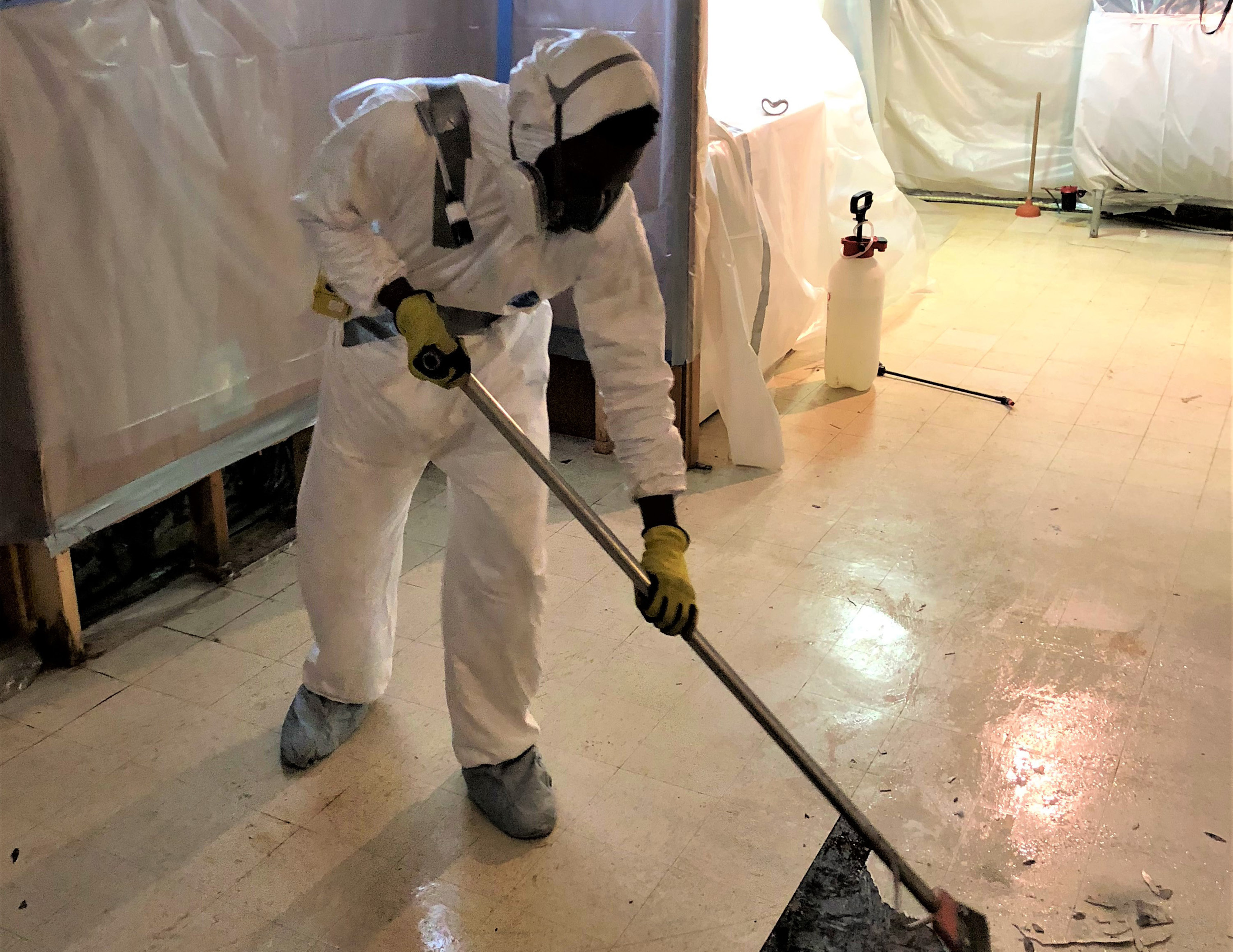Search for articles or browse our knowledge portal by topic.
Removal of Improvements & Asbestos

Improvements are modifications to land that increase its value (e.g., buildings, structures, canopies, ponds, retaining walls, outdoor advertising signs, fencing). When parcels contain buildings, structures, or other improvements within the limits of road construction, they must be removed. It is preferable to demolish and remove improvements in advance of awarding the construction roadway contract. Doing so removes safety hazards, minimizes liability, and maintains an orderly ROW.
Side Note
Land and improvements are appraised separately. A parcel’s total appraised value equals the sum of the land appraisal and improvements appraisal.
The Division of Right of Way and Utilities removes as many improvements as possible from the ROW limits prior to releasing parcels for project work. Before removing improvements, the Division of Environmental Analysis must identify hazardous materials located in the improvements or contaminated soil. Division of Right of Way and Utilities staff, the Division Environmental Coordinator, and the PM work in collaboration throughout this process.
During the ROW acquisition phase, structures (buildings and highway structures) must be evaluated for asbestos‐containing materials (ACM). KYTC has two processes for asbestos inspection and abatement – one for standing buildings and structure improvements within the project limits and one for highway structures like bridges.
For buildings, KYTC may perform ACM inspections at any time if it receives the permission of the property owner and the occupants. Once KYTC takes physical possession of the property, abatement proceeds. The District Property Management Agent coordinates with the Division of Environmental Analysis to evaluate improvements for ACM during the ROW acquisition phase. District property management staff address removal and abatement of ACM from structures that will be razed prior to releasing a parcel for a roadway contract. If the general roadway contractor is responsible for removing improvements, DEA handles ACM abatement before construction letting. Regardless of the party responsible for removing an improvement, the Energy and Environmental Cabinet, Division of Air Quality (DAQ), requires the contractor to submit a notification 10 working days prior to demolition. Division of Environmental Analysis inspection information supplements the contractor’s formal Notification of Asbestos Abatement/ Demolition/Renovation (Kentucky Department for Environmental Protection – DEP Form 7036) to DAQ.
When a project requires bridge demolition or removing portions of a bridge structure, including railings, barriers, substructure, or superstructure, the Division of Environmental Analysis is responsible for assessing whether asbestos is present. If Division personnel identify a potential for asbestos on the bridge, KYTC either removes the ACM prior to the construction letting or inserts asbestos removal into the roadway contract. If asbestos removal is incorporated into the contract, the roadway contractor is responsible for submitting DEP Form 7036 to the DAQ, which is supplemented by Division of Environmental Analysis inspection data.
Red Flag
Asbestos-coated waterlines may be encountered during utility relocation activities. The PM coordinates with the Division of Environmental Analysis on remediation. This can also be incorporated into the roadway contract using a Special Note that informs the contractor of the requirements for removal and proper disposal.
If the property owner does not retain an improvement and it is not needed as replacement housing for another displaced person, the district may solicit bids from contractors to remove the improvement(s). The Property Management Agent periodically inspects removal activities done by owners or contractors, keeps records of those inspections, and ensures timely removal and compliance with specifications.
Time Management for Highway Project Development Knowledge Book:
Access the complete Knowledge Book here: Time Managment Knowledge Book
Next Article: Hazmat/Additional Archaeology
Previous Article: Biological Assessment


